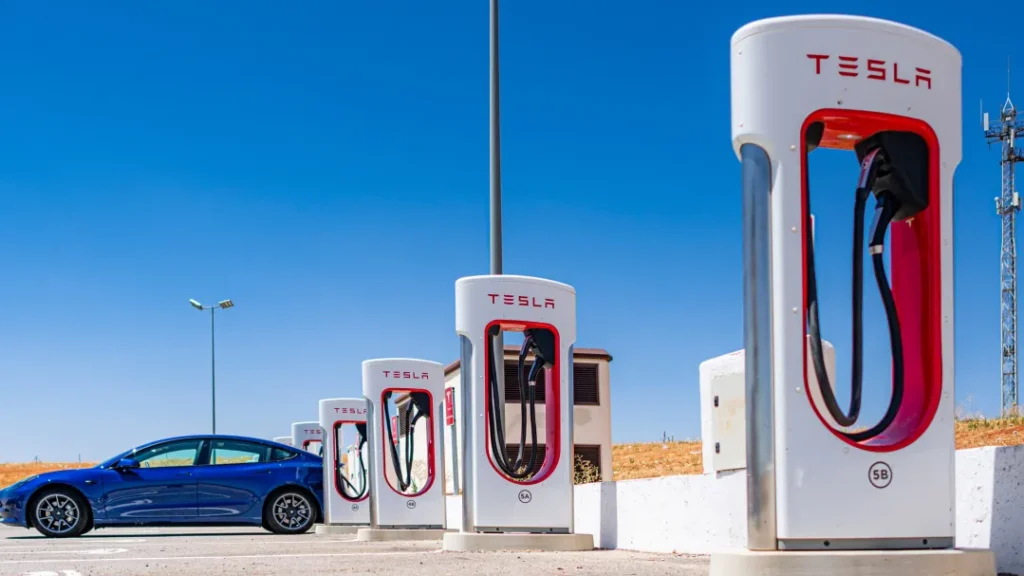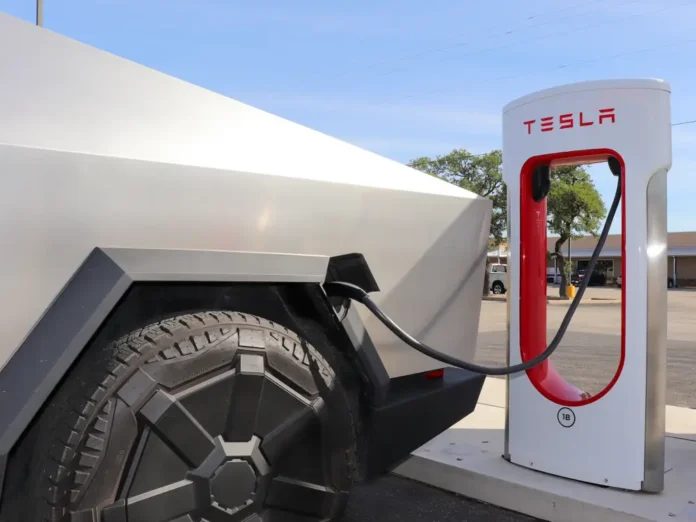Tesla’s unexpected layoffs of its charging team have sent shockwaves through the electric vehicle (EV) industry. The company has laid off about 500 employees, causing confusion and uncertainty about the future of its Supercharger network, which is crucial for EV drivers and many automakers that have adopted Tesla’s charging technology.

In recent years, Tesla’s Supercharger network has been a gold standard for fast-charging, with about 65% of the nation’s fast-charging plugs. With major automakers like Ford, General Motors, and Rivian adopting Tesla’s North American Charging Standard (NACS), Tesla’s Supercharger network was positioned to become the backbone of a unified charging system for EVs.
However, the layoffs cast doubt on Tesla’s commitment to expanding the network. Tesla had previously promised to double the size of its Supercharger network by the end of 2023, partially funded by $17 million in government grants. Despite the rapid expansion—totaling about 20,000 plugs in the U.S. as of August and growing by about 8% each quarter—the layoffs could slow this growth.
Elon Musk, Tesla’s CEO, attempted to ease concerns, stating on X that the company would continue to grow its Supercharger network but “at a slower pace for new locations,” with a greater focus on reliability. Despite this, the layoff news caused Tesla’s stock to drop, and Tesla’s silence on future plans has left contractors and automakers in the dark.
Contractors like Andres Pinter, co-CEO of Bullet EV Charging Solutions, are already feeling the impact of the layoffs. Pinter described his frustration with the lack of communication from Tesla, noting that many contractors could face serious trouble if they don’t have other non-Tesla projects to fall back on.
This uncertainty affects not only Tesla owners but also the broader EV industry. With more non-Tesla vehicles set to access the Supercharger network, Tesla drivers worry about increased wait times at already crowded stations. Meanwhile, automakers that partnered with Tesla are left wondering how the network’s growth will continue and whether their charging plans are at risk.
The layoffs suggest Tesla might be re-evaluating its charging strategy. Although some analysts estimate that Tesla could earn up to $12 billion a year by 2030 from charging revenue, building and maintaining new Supercharger stations is costly. If Tesla scales back its expansion, it could impact the entire EV ecosystem, leaving automakers and EV owners to look for alternative solutions.
For now, the EV industry is left to wait and see how Tesla’s charging strategy evolves. The abrupt change of course underscores the challenges of building a unified charging infrastructure and highlights the need for a more diversified approach to ensure a robust and reliable EV charging network.

